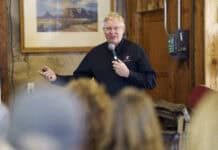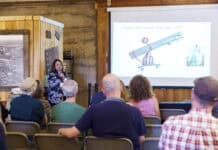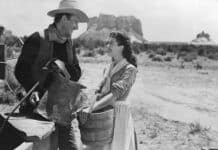A back-country rescue over the weekend is yet another reminder of the dangers than can come while hiking in the area. It’s also a statistic that is on the rise.
According to Sedona Fire District Fire Marshal Jon Davis, the incident took place on Saturday, March 31, near Chavez Crossing. The male hiker fell approximately 35 feet and was located in inaccessible terrain. SFD called for the assistance of an Arizona Department of Public Safety’s Ranger rescue helicopter out of Kingman to perform a short-haul rescue.
The man was moved to a landing zone, where he was transferred to the Guardian helicopter and transported to Flagstaff Medical Center in serious condition.
When faced with the decision of how to determine the best choice for extracting a critically injured patient from the back country, SFD Battalion Chief Jayson Coil said many factors must be considered.
“The impact to patient outcome, appropriate allocation of scarce resources, severity and duration of exposure to risk, uncertainty on patient condition/location, and the weather must all be considered,” he said. “Ultimately the final decision rests with the pilot, but we support that decision through a coordinated and structured assessment and response because we understand that mistakes can have catastrophic outcomes.”
Davis said that year to day in 2017, SFD had performed 13 back-country rescues. So far this year that number has jumped to 23, an increase of 77 percent. Rescues from 2016 to 2017 also saw a dramatic increase.
“It seems that we are seeing an increase in the number of rescues,” SFD Kris Kazian said. “The exact cause of this is not specific to any one thing. More people in the area probably has an impact and social media allowing people to post the things they have done more publicly than ever before — which encourages others to want to try it — seem to be two good guesses.”
While the overall increase in back-country rescues is cause for concern, Kazian said the number of recent short-haul rescues is even more so because of the additional risks involved.
“This is a very complicated, technical and dangerous rescue,” he said. “The use of the short haul and DPS helicopter saves an inordinate amount of staff time and manual labor, so when warranted, it is the best tool we can utilize to save a life. That being said, we do have a person hanging from a rope 100 to 150 feet below a flying helicopter. This takes an amazing amount of training for the DPS helicopter pilot and the short-haul technician. The trust and confidence in one another is required, and we work often with DPS to keep up our proficiency.”
SFD is statutorily responsible for providing care and aid to those who are hurt within the geographical boundary, Kazian said. They work in conjunction with the respective county search and rescue teams when appropriate. In many cases, if the party is not hurt, the Search and Rescue team will do rescues independent of SFD. Either way, he said each team complements the other very well.
“I am proud of the skills and professionalism our welltrained staff are called to provide on a daily basis,” Kazian said. “While these rescues are a little more exciting to see, they are doing incredible things each and every day when someone calls 911.
“What more could a fire chief ask for? Knowing your firefighters and EMS crews will provide the best service each and every time someone calls for help is a very reassuring feeling to me and should certainly be to the community as well.”
Ron Eland can be reached at 282-7795 ext. 122, or email reland@larsonnewspapers.com


















